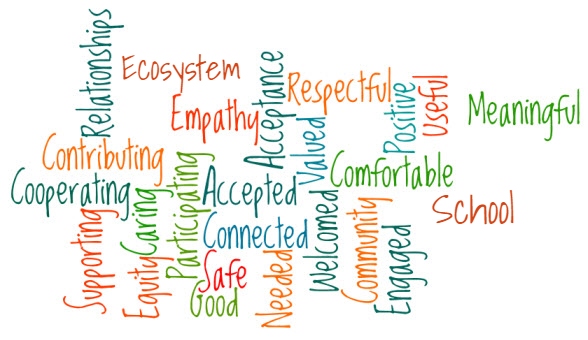School as an Ecosystem
The word ‘ecosystem’ connotes the well-being of biological lives in a given geography or biosphere. In short, the place where different life-forms interact and co-exist is referred to as an ecosystem. In this respect can schools be called an ecosystem? This question is probably rhetorical. Schools today are not just classrooms, buildings, playgrounds, resources – digital & physical, students, parents, teachers, caretakers independent of each other, but a space where all these and more come together to interact and co-exist. In that sense, school is an ecosystem.
Schools today place an increasing emphasis on developing “well-rounded” students. This means, the emphasis is on developing students as future citizens, and not just as mark-scoring machines. Hence, the concept of ‘school as an ecosystem’ provides this opportunity. Let us look at how this ecosystem can function effectively.
Schools are not Factories
The concept of viewing schools as factories producing high-scoring students finds no favour amongst many. The ‘mark scoring’ concept is jokingly referred to as raising broiler chickens. Though a joke, in a deeper sense, the statement is the bitter truth. The success of many schools is unfortunately measured with the cumulative scores its students obtain. Schools are amazingly complex environments that cannot be reduced to factories producing intended products. A school must allow students to thrive and build their knowledge and skills through their years of learning. A line-production is thus ineffective and counter-productive.
Schools as a Social Environment
Schools that believe in providing a conducive learning environment allow interaction between their students, parents, caretakers, pedagogical leaders and the management regularly. This fosters a healthy community of stakeholders who support each others’ roles in their mission. By understanding each groups’ roles, a culture of mutual respect and open communication is built amongst the internal stakeholders.
When the focus is on learning and actualizing individual potential, a school encourages several interactions between students & teachers with guest faculties / special invitees both within the physical space and outside. These interactions expose and help the community of learners to hone their inter-personal, communication, accountability, problem-solving, adaptability and many other skills. As an ecosystem, interdependence and interconnectedness begins to appear in the school. This is often a challenge if a school works as a stand-alone entity. Strategies to find ways to work together, sustain and co-exist are the keys to successfully face these challenges.
Facing challenges builds strength and resilience amongst the students and teachers. In this ideal school ecosystem, the teacher also guides the students to face the challenges. A teacher who integrates with this social environment is aligned to integrating skills and attitude in the learning journey of their students.
Measuring the success of a school
The conventional method of measuring success of a school by gauging student marks is still popular and easy. But, an alternate way of measuring a school’s success is about recognizing how it fosters creativity, encourages and implements innovative ideas, imparts decision-making skills, helps provide an array of workable solutions, nurturing a community of learners who recognise their roles. In such an ecosystem, schools develop relevant and cohesive curriculum that best suits their learners. It is important to recognize that every student, and every teacher is as unique as does every lifeform in an ecosystem, bringing with them their unique experiences, interests, understanding, culture, expertise and readiness. They all work, contribute and co-exist together in an environment where continual learning is fostered and nurtured for all.



